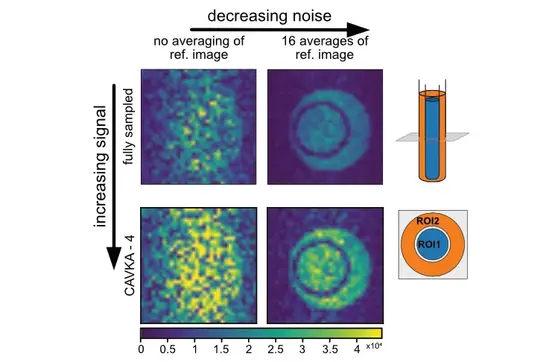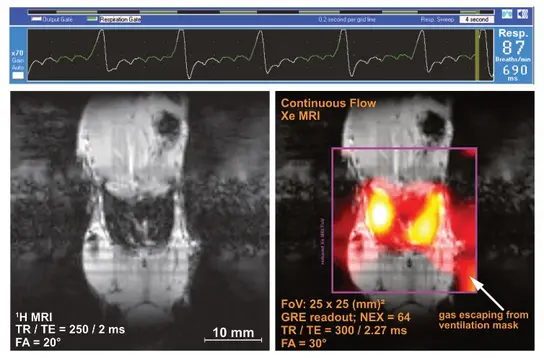MR image encoding
The limited lifetime of the hyperpolarized spin state requires special strategies when recording MRI data. In the CAVKA method, for example, the magnetization of the hyperpolarized spins is divided into segments of equal size and only used for the most necessary information of the image contrast. The measurement time can thus be reduced by a factor of 20.


CAVKA stands for "Combined Approach of Varaible Flip Angle (VFA) and Keyhole Acquisition" and combines two approaches that are used in other contexts to make optimal use of the magnetization of hyperpolarized spins and to acquire MRI data more quickly. The methods will initially be tested for the Xe exchange behavior of various biosensors and will then be used in preclinical studies.